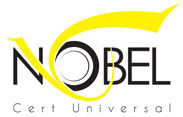CE marking is a certification mark that indicates conformity with health, safety, and environmental protection standards for products sold within the European Economic Area(EEA).The CE marking is also found on products sold outside the EEA that are manufactured in, or designed to be sold in, the EEA. This makes the CE marking recognizable worldwide even to people who are not familiar with the European Economic Area. It is in that sense similar to the FCC Declaration of Conformity used on certain electronic devices sold in the United States.
The CE marking is the manufacturer’s declaration that the product meets the requirements of the applicable EC directives.
The mark consists of the CE logo and, if applicable, the four digit identification number of the Notified Body involved in the conformity assessment procedure.
“CE” originated in 1985 as an abbreviation of Conformité Européenne, meaning European Conformity, but is not defined as such in the relevant legislation. The CE marking is a symbol of free marketability in the European Economic Area (Internal Market).
Existing in its present form since 1985, the CE marking indicates that the manufacturer or importer claims compliance with the relevant EU legislation applicable to a product, regardless of where manufactured. By affixing the CE marking on a product, a manufacturer is declaring, at its sole responsibility, conformity with all of the legal requirements to achieve CE marking which allows free movement and sale of the product throughout the European Economic Area.
For example, most electrical products must comply with the Low Voltage Directive and the EMC Directive; toys must comply with the Toy Safety Directive. The marking does not indicate EEA manufacture or that a product has been approved as safe by the EU or by another authority. The EU requirements may include safety, health, and environmental protection, and, if stipulated in any EU product legislation, assessment by a Notified Body or manufacture according to a certified production quality system. The CE marking also indicates that the product complies with directives in relation to ‘Electro Magnetic Compatibility’ – meaning the device will work as intended, without interfering with the use or function of any other device.
Not all products need CE marking to be traded in the EEA; only product categories subject to relevant directives or regulations are required (and allowed) to bear CE marking. Most CE-marked products can be placed on the market subject only to an internal production control by the manufacturer (Module A; see Self-certification, below), with no independent check of the conformity of the product with EU legislation; ANEC has cautioned that, amongst other things, CE marking cannot be considered a “safety mark” for consumers.
CE marking is a self-certification scheme. Retailers sometimes refer to products as “CE approved”, but the mark does not actually signify approval. Certain categories of products require type-testing by an independent body to ensure conformity with relevant technical standards, but CE marking in itself does not certify that this has been done.

